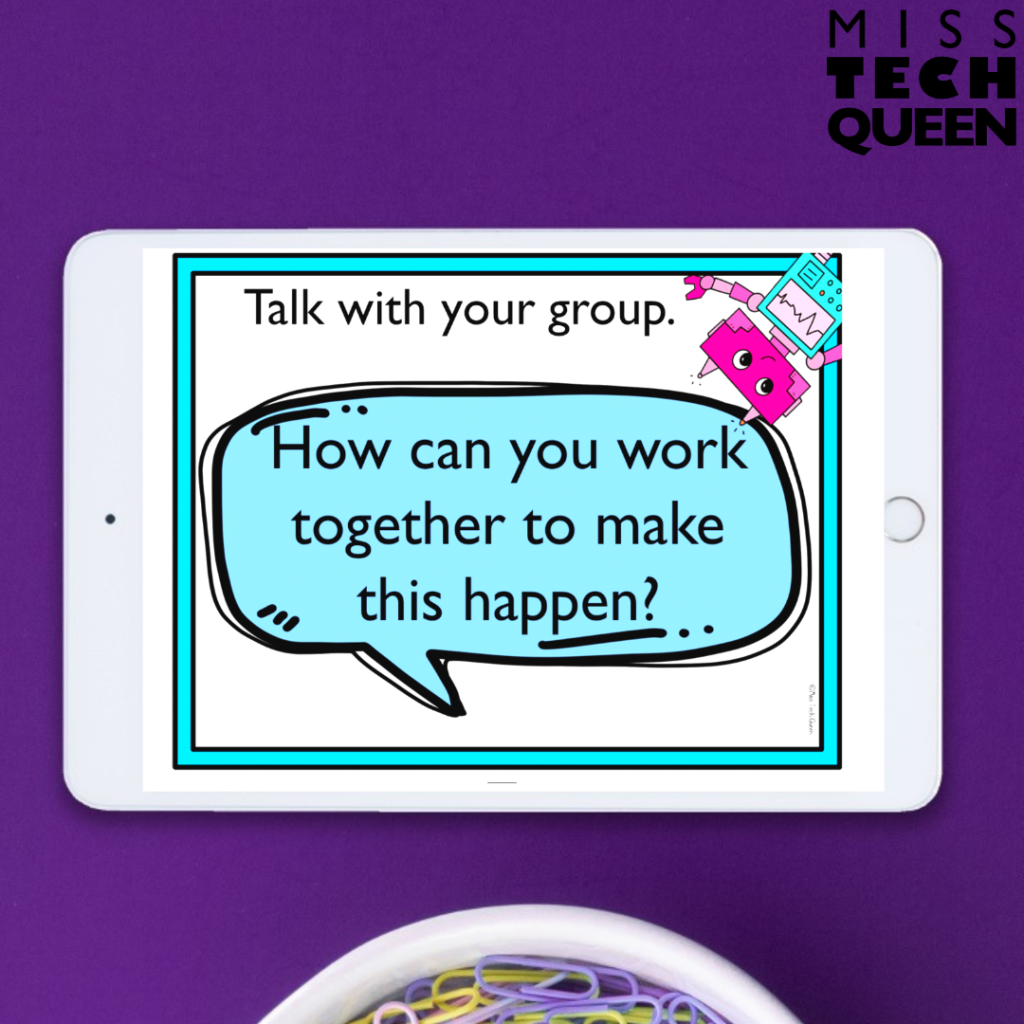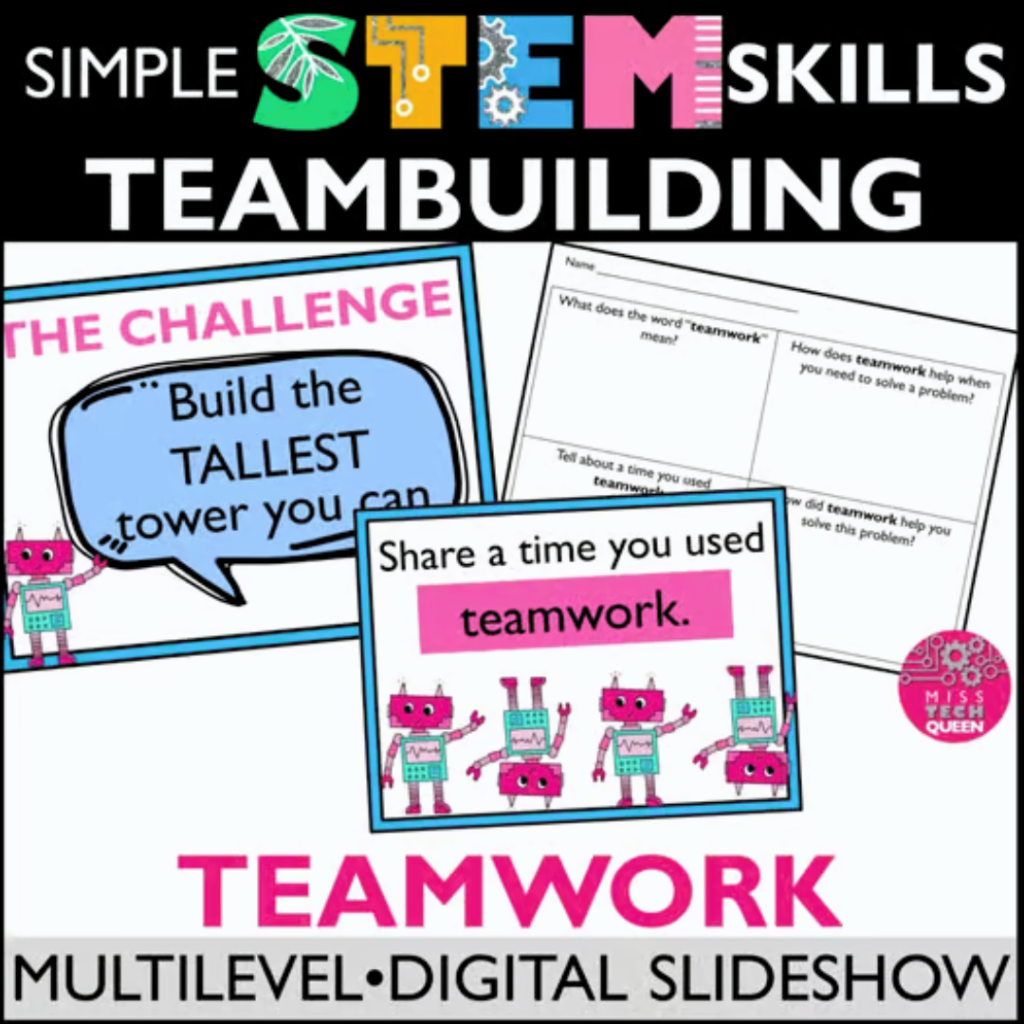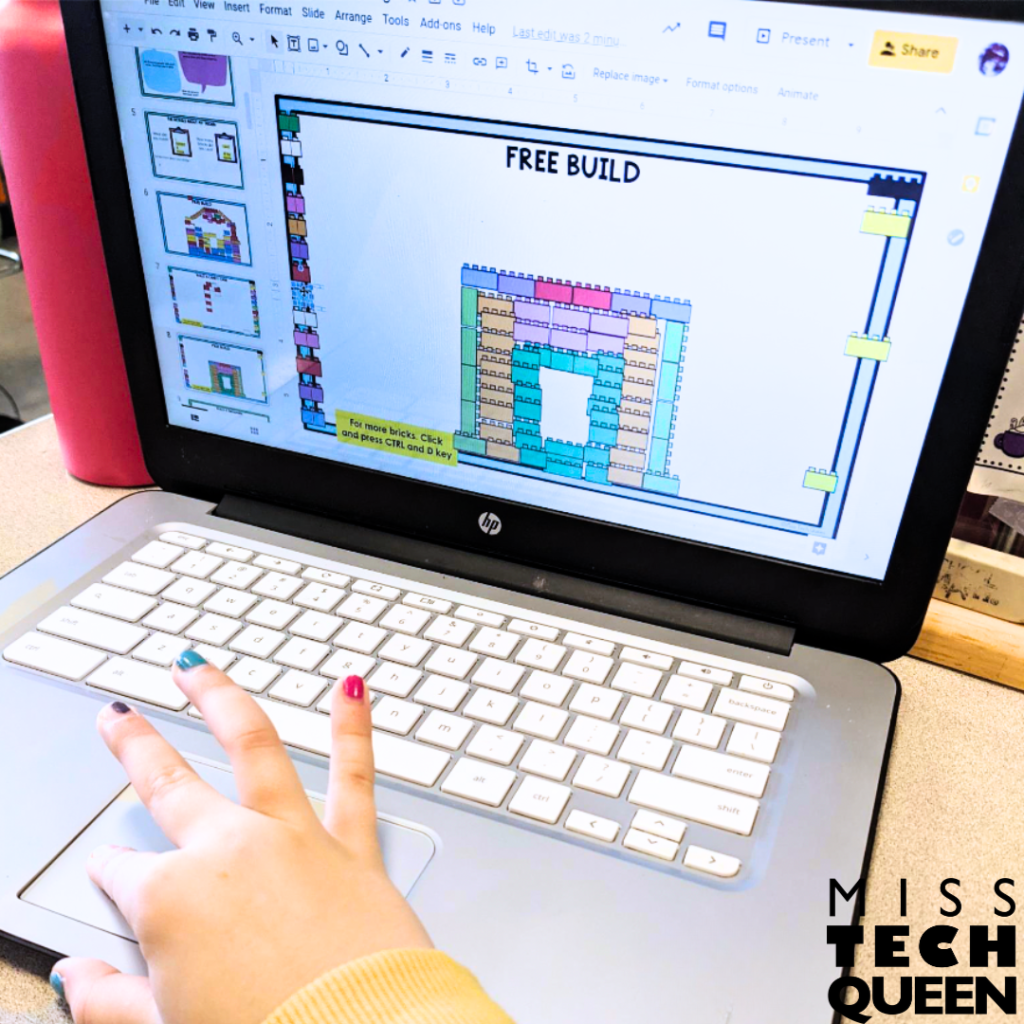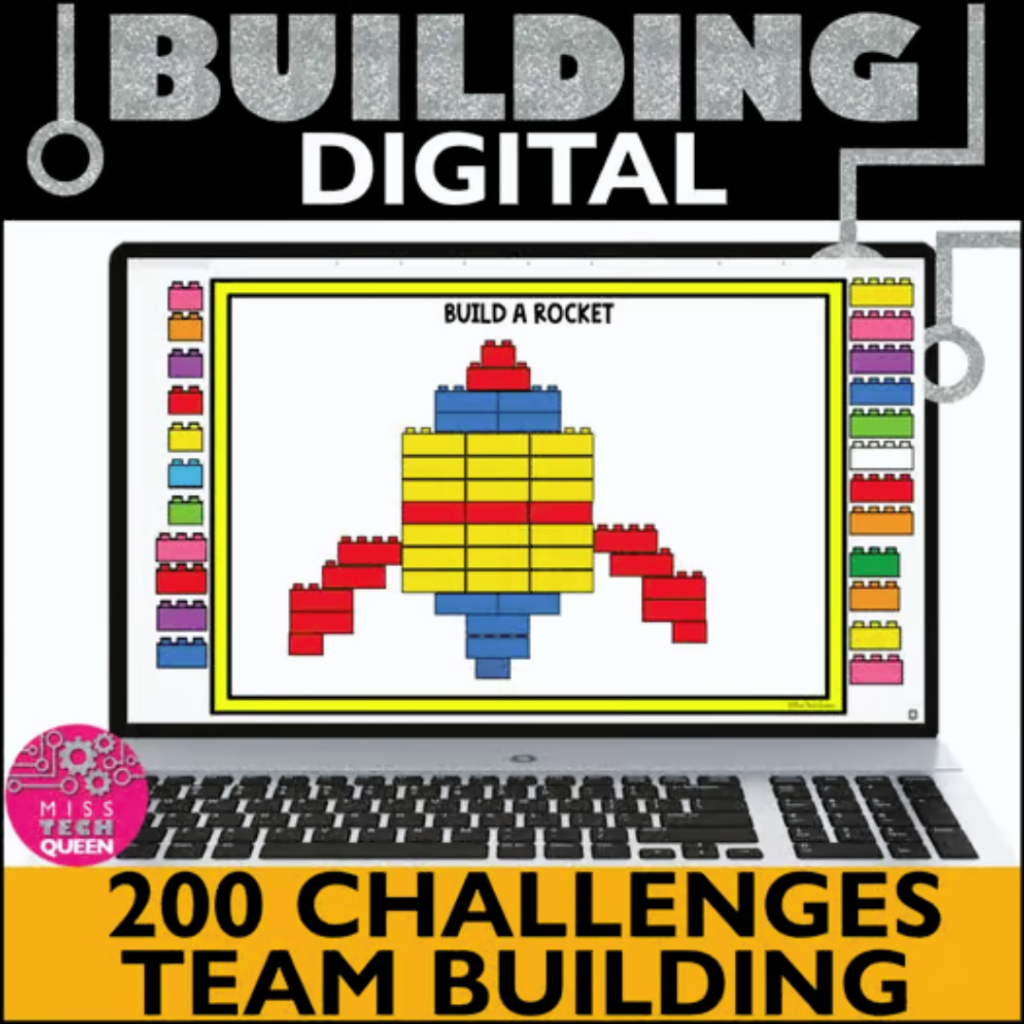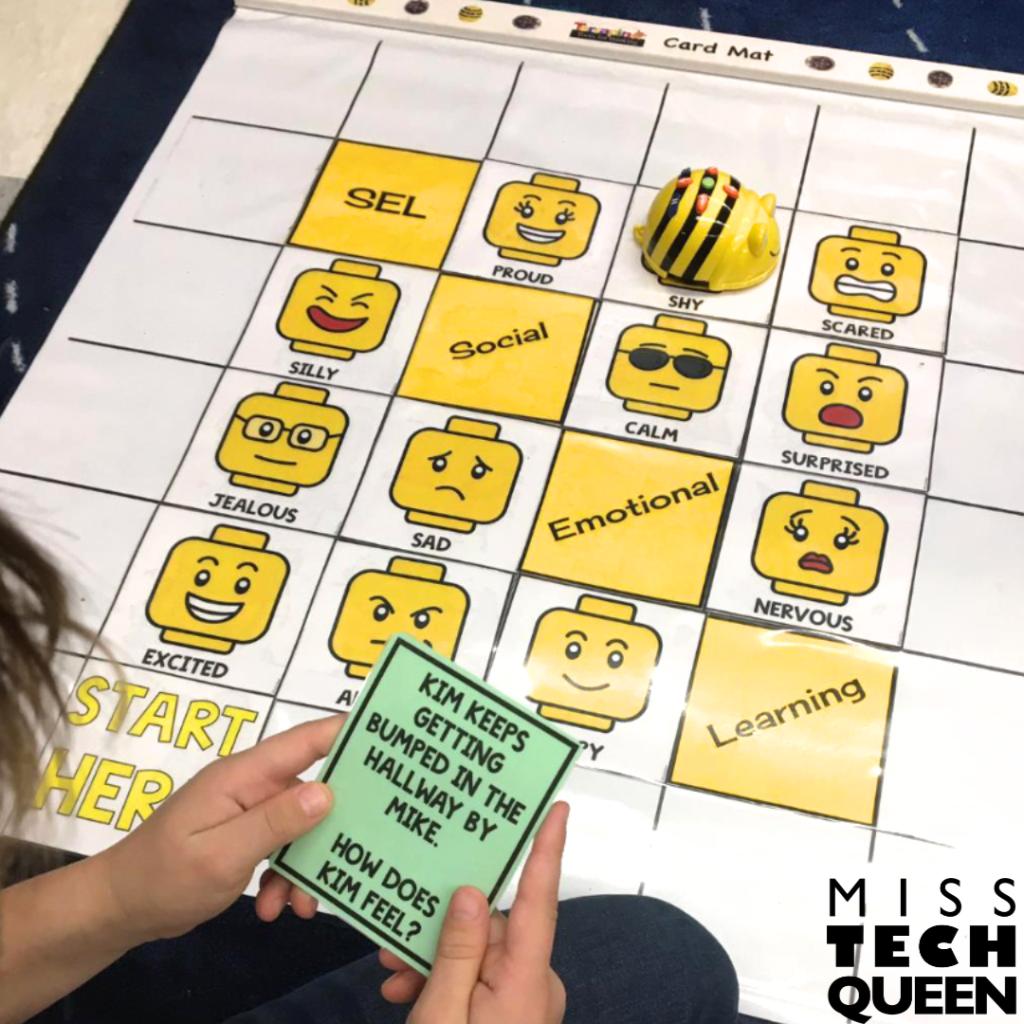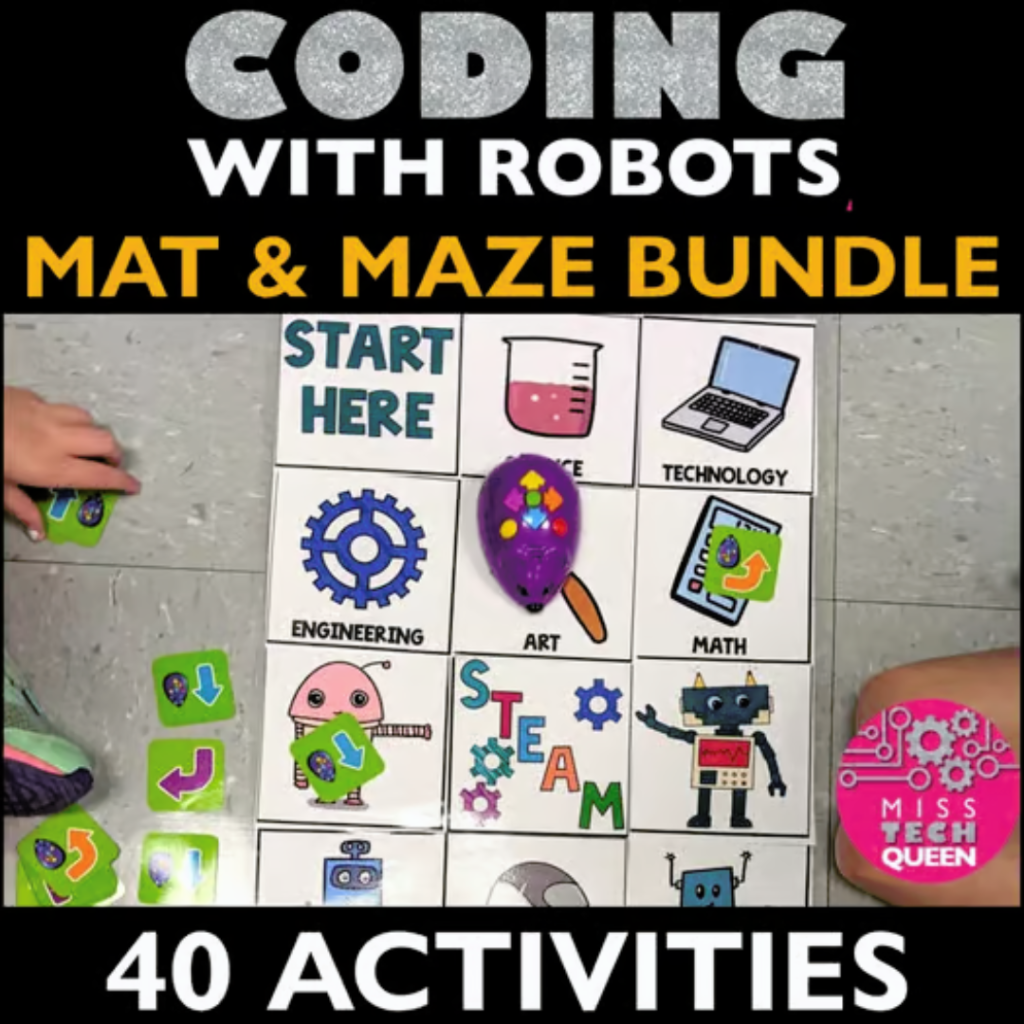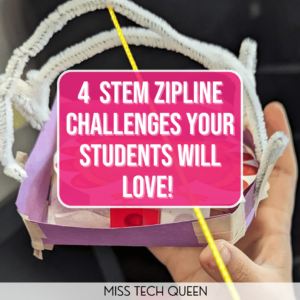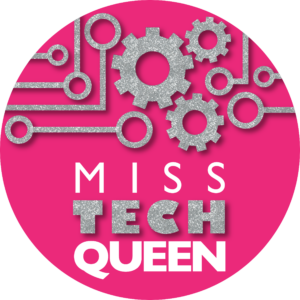
Collaborative Learning Through an Elementary Makerspace
Have you ever watched your kiddos interact with each other during group work? Most often, they either work well together or divide and do their own thing. With this dilemma in mind, how do we prepare our kiddos as they move on through school and life, where they are going to need to work together? This is where a collaborative elementary makerspace will be the shining star!

In the dynamic landscape of education, one shining star takes center stage: collaboration. It’s not just a strategy but the secret to student success. In today’s post, we are diving into the amazing world of collaborative learning environments found in an elementary makerspace. We’ll discuss benefits, resources, and strategies to get started. So, buckle up as we explore the countless benefits of students working hand in hand.
First Off, What is a Makerspace?

Before we dive into collaboration, let’s talk about the makerspace concept for a minute. According to makerspaces.com, “A makerspace is a collaborative work space inside a school, library or separate facility for making, learning, exploring and sharing that uses high tech to no tech tools.” This broad definition means that you can customize your classroom makerspace to fit your unique needs. Whether you are a classroom teacher, specials teacher, or something different, a makerspace can work for you!
I like to think of it as a center for exploration where students can discuss, create, invent, and work together. These centers are beloved by students and offer an opportunity for deeper learning. If you want to learn more about setting up a makerspace, be sure to check out this post for all the details on how to do so!
Why Collaborative Learning?
Education is so much more than just books and lectures. Aside from the nuts and bolts of education, we have to consider the social aspect of learning. This is where collaborative learning takes center stage. When students get together for group discussions, peer teaching, and joint projects, something magical happens. It’s this environment that offers a real, deep-down understanding of the subject and helps students learn to collaborate with peers.
Tapping into the collaborative nature of a makerspace enhances the learning experiences of your kiddos. It provides them with hands-on challenges and non-threatening opportunities to work with their peers to achieve a common goal!
Here are a few reasons you might want to consider trying this technique in your classroom.
1. Diverse Perspectives and Ideas
When students from various backgrounds team up, new perspectives are revealed to our students. Children are exposed to ideas they may have never considered before. These group meetings become a celebration of unique insights. Working together in a makerspace creates a time when every voice is heard and celebrated. It’s about learning from each other’s experiences, thought processes, and ideas.

2. Development of Social Skills
We all know that school isn’t just about the ABCs and 123s, especially in this day and age. It’s also the place where we learn how to navigate the social jungle.
Collaboration is the survival guide for that jungle. Working in teams helps students learn how to become communication ninjas, leadership maestros, and interpersonal skills gurus.
3. Preparation for Real-world Challenges
The professional world is like this big, bustling city, and guess what? Collaboration is the secret pass to getting in smoothly. So, when students get their hands dirty in collaborative learning, they’re not just preparing for the next exam. They’re gearing up for the real-world challenges waiting around the corner!
4. Increased Motivation and Engagement
Imagine walking into a classroom and noticing that it feels more like a structured hangout session than a traditional lesson and assignment. That’s the magic of collaborative learning. Students tap into the natural learning process that comes from asking questions and working together for a common goal. When students feel that sense of shared responsibility, it brings excitement to the usual mundane tasks.
Getting Started with Collaboration
Now that you understand the value of using an elementary makerspace, let’s talk about activities to use in them! But before you jump right into collaborative learning, it is a good idea to lay the foundation. That is why I created some lessons and activities specifically focused on collaboration and working as a team. While some skills come naturally to kids, others don’t. By teaching our kids the “rules of the game” when it comes to working together we prepare them for successful collaborations.
1. Teaching About Brainstorming
We’re kicking things off by putting the spotlight on the art of brainstorming – a skill that’s not just crucial for STEM but stretches its creative fingers into various aspects of life.
Brainstorming isn’t just a warm-up. It’s where ideas flow without constraints, encouraging students to think creatively and build on each other’s genius thoughts. But this is not a natural process. So many kids {and adults} are quick to start after coming up with one idea. But often the first idea is not the best one. That’s where brainstorming comes into play.
My Teambuilding Brainstorming activities are designed to spark dynamic discussions. Through these activities, your students will learn that brainstorming is about listening, building, and sharing ideas without judgment. Kids learn that the power comes in working together to take the first idea and turn it into an extraordinary idea.
How do we teach this? Through fun practice, of course! Students will learn about brainstorming through activities that get them thinking, listening, sharing, and developing.
Dive into the true meaning of brainstorming with cool discussion cards. Then, get hands-on as students explore everyday objects, brainstorming different ways to use them, all while thinking outside the box together.
With easy-to-copy printable response sheets and a tech-friendly digital version, this activity is a creative powerhouse and a breeze for teachers to implement. So, let the brainstorming bonanza begin – an exciting journey of learning, collaboration, and unleashing creativity!
2. Add Teamwork Lessons into Your Elementary Makerspace
Next up, lay the foundation for collaboration with a focus on teamwork! This essential life skill goes beyond STEM and permeates every aspect of our lives. It’s not just about completing a task together but cultivating a sense of ownership and problem-solving as a collective. I’ve got the perfect Teamwork lesson that’s easy to use and caters to every teaching style.
In this hands-on activity, students embark on a journey to understand the essence of teamwork. They kick off with a discussion, diving into what teamwork truly means – laying the groundwork for what follows. Then, the magic unfolds as cups become the tools of the trade, and students engage in an activity that demands teamwork to successfully complete the challenge.
What’s in the Teamwork STEM Challenge Package:
The Teamwork Activity Pack includes:
- A Google Slides Presentation that syncs seamlessly with Microsoft PowerPoint
- Task Cards
- Discussion Questions
- Student Response Sheets
It has everything you need to teach about teamwork through experiential learning.
Gear up for a teamwork adventure that not only reviews essential STEM skills but also sets the stage for a year filled with collaborative learning and unleashed creativity!
Collaborative Learning Activities for Your Elementary Makerspace
Now that you have built the foundation of brainstorming and teamwork, it is time to fill your makerspace with activities that get your kids collaborating and learning. When it comes to ideas there is truly no limit to what you can do.
This can be a time for free exploration or give students a prompt or challenge to solve. If you are a classroom teacher, connecting the prompt or challenge to something you are studying is a great way to get your students thinking about what they are learning at a deeper level.
Not sure where to start or want some ‘done for you’ makerspace activities? You are in luck. I have a variety of activities in the Miss Tech Queen store that can quickly and easily be added. Here are just a few.
Collaborative Building
Get ready to spark some digital creativity in your classroom with my Digital Lego Building Bundle. This bundle is the ultimate virtual brick-building experience that brings students together in the world of Google collaboration! Whether you’re looking for engaging activities for early finishers, tech classes, or those beloved Fun Fridays, this bundle has got you covered with 10 themed activities. Each theme includes multiple builds meaning you have collaborative building for the entire year!
And. . . since these are digital builds you don’t need to spend lots of money on building blocks. Plus there is no distracting noise or mess with these digital building activities.
This isn’t your average brick-building experience. It’s a digital playground that encourages teamwork, problem-solving, and critical thinking skills. Perfect for early finishers or team-building sessions, students can dive into creative challenges independently or collaborate in pairs, all through their devices.
All you need is internet access and a device! With detailed directions included, it’s a breeze to provide each student or team with their own copy. The best part? They can be on the slideshow simultaneously, building together in real time!
What’s Inside the Bundle:
Each seasonal theme comes with a 45-page slideshow featuring 10 basic tasks and 10 advanced tasks with restrictions on height/length. The movable brick pieces make it interactive, promoting creativity without the need for passing out physical materials.
Plus, I’ve thrown in response sheets for every challenge, measuring activities, reflection sheets, student tip pages, and a handy teacher’s guide to seamlessly navigate the digital realm.
Coding in the Elementary Makerspace
Time to infuse your classroom with the excitement of coding and robotics using my Robotics Elementary Coding Activities Bundle!
This resource is your key to seamlessly integrating coding with robots into your curriculum without adding extra stress to your to-do list.
This bundle is designed to make coding an inherent part of your teaching journey, whether it’s during STEM time, centers, team-building sessions, or those cherished elementary makerspace activities.
With task cards and mazes that are easy to assemble, your students will soon be coding with robots like pros!
This comprehensive bundle doesn’t just save you time. It transforms coding with robots into an engaging and meaningful learning experience. Adorn your classroom with Coding with Robots Posters featuring easy vocabulary suitable for K-4. The package includes over 40 themed mat activities covering holidays, seasons, math, science, geography, STEAM, and more, ensuring a diverse and exciting coding journey for your students.
Inside Each Coding Activity Pack
Experience the simplicity and effectiveness of this bundle with all the ready to use resources. From task cards guiding students on programming goals to response sheets for students to reflect on their learning, the activity pack has everything you need. It also includes all the activity squares for creating the coding mats and detailed teacher tips and directions.
These activities are adaptable for various robots like Bee-Bot, Robot Mouse, Sphero, Dash, and Botley. Prep time is a breeze – print out the mats, cut out the task cards, and you’re ready to roll! Place the mats on the floor, let students use task cards to program the robot’s directions, and watch as they navigate the coding landscape.
Collaborative Movie Making
Another great way to get your students working together is to have them create a movie. Stop Motion Animation is a fun and easy way for students to work together as they work on brainstorming ideas, creating an outline, writing the storyline, working on space planning and motions, filming and so much more!
Movie making is a great way to connect so many academic topics into your elementary makerspace. Students can retell a story, reenact an event from history, teach about a science concept, or act out a math word problem. And. . . they won’t even realize just how much they are learning because they will be focused on the fun of making a stop motion animation movie.
The Stop Motion Animation Kit has everything you need to get started. This resource is filled with step-by-step teacher directions & tips to getting started, vocabulary task cards, a rubric, and student response sheets.
You can create movies with your class with only a few simple materials. Collaborative learning packs a punch with movie making!
Make Your Elementary Makerspace an Oasis for Collaboration
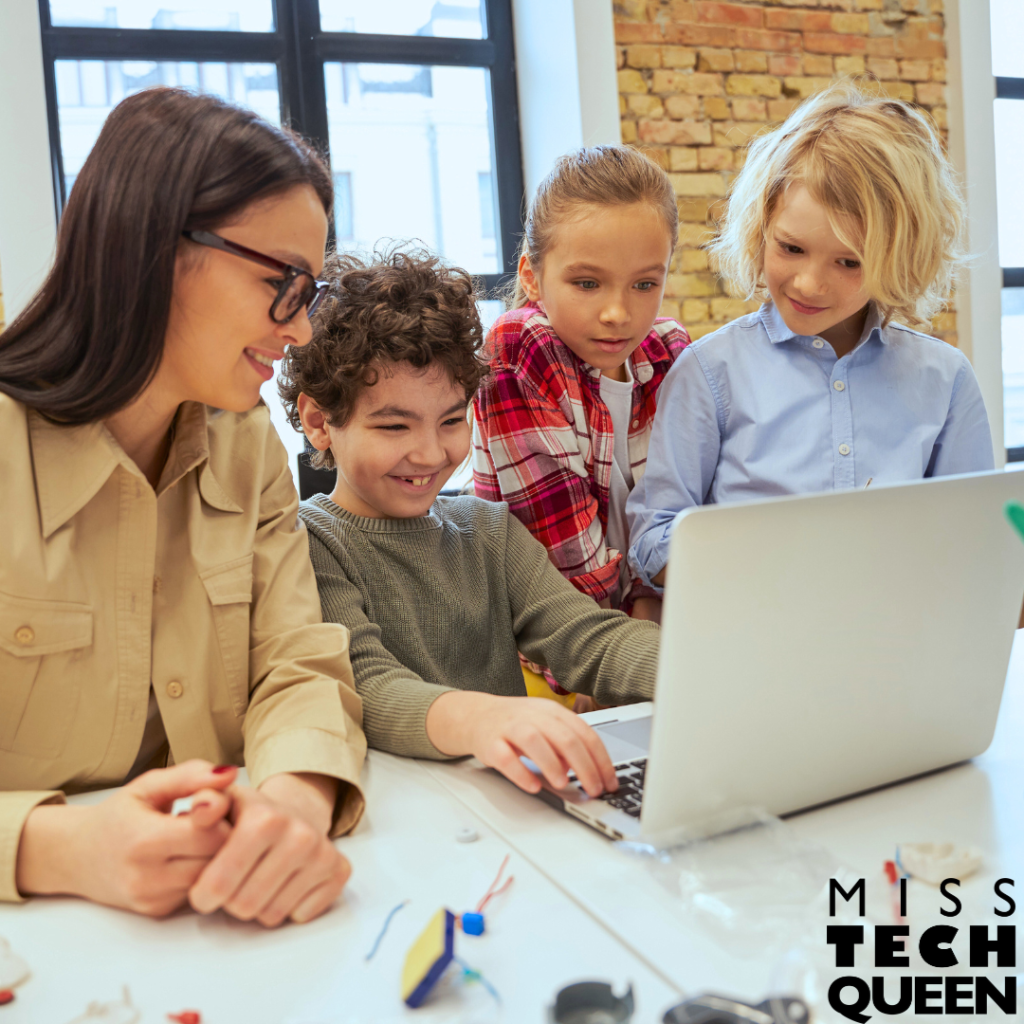
Life isn’t a solo game, right? So, how do we prep our kiddos for the tag-team challenges coming their way? Well, welcome to the fantastic universe of collaborative learning in an elementary makerspace! In our bustling world of elementary education, one thing’s clear – collaboration needs to be part of our daily classroom environment.
Our students benefit in so many ways when we use a collaborative makerspace! From brainstorming bonanzas to digital building activities, and teamwork challenges to movie making adventures, creating opportunities for collaborative learning just got a whole lot easier.
So, here’s to the collaborative spirit – let’s watch our kiddos thrive, not just academically but in every adventure life throws at them!
Save these Elementary Makerspace Ideas
Remember to save this to your favorite STEM Pinterest boards to return to when in need of ideas to enhance collaboration in your elementary makerspaces!

Share it:
- Read more about: Collaboration, Makerspace



